There are many storied ships and commanders in the United States Navy but it would be harder to name two whose destinies intersected in such a dramatic way. The USS Sailfish had been built as the Squalus – lost at sea in a time when that meant certain death for the crew through bravery and ingenuity they were saved – she was salvaged and sailed again to glory against the Empire of Japan. John Phillip Cromwell was a lowly lieutenant in those days but his bravery would surpass even the heroism of the Squalus. John F. Kennedy said, “I can imagine no more rewarding a career. And any man who may be asked in this century what he did to make his life worthwhile, I think can respond with a good deal of pride and satisfaction: ‘I served in the United States Navy,'” the crews of both these submarines could certainly answer that in the affirmative.
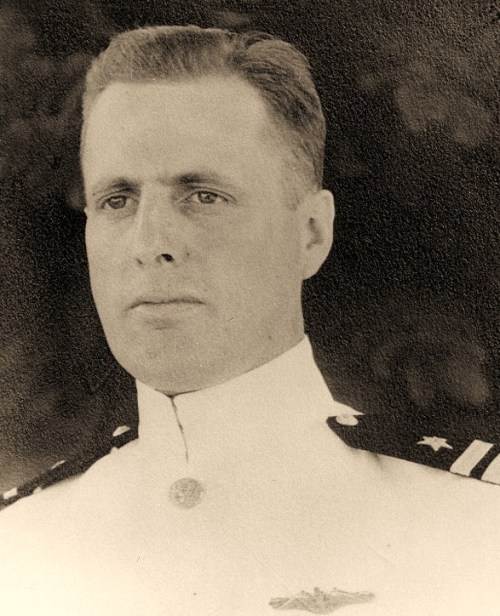
Medal of Honor citation for Captain John P. Cromwell “For conspicuous gallantry and intrepidity at the risk of his life above and beyond the call of duty as Commander of a Submarine Coordinated Attack Group with Flag in the U.S.S. Sculpin, during the Ninth War Patrol of that vessel in enemy-controlled waters off Truk Island, November 19, 1943. Undertaking this patrol prior to the launching of our first large-scale offensive in the Pacific, Captain Cromwell, alone of the entire Task Group, possessed secret intelligence information of our submarine strategy and tactics, scheduled Fleet movements and specific attack plans. Constantly vigilant and precise in carrying out his secret orders, he moved his underseas flotilla inexorably forward despite savage opposition and established a line of submarines to southeastward of the main Japanese stronghold at Truk. Cool and undaunted as the submarine, rocked and battered by Japanese depth-charges, sustained terrific battle damage and sank to an excessive depth, he authorized the Sculpin to surface and engage the enemy in a gun-fight, thereby providing an opportunity for the crew to abandon ship. Determined to sacrifice himself rather than risk capture and subsequent danger of revealing plans under Japanese torture or use of drugs, he stoically remained aboard the mortally wounded vessel as she plunged to her death. Preserving the security of his mission at the cost of his own life, he had served his country as he had served the Navy, with deep integrity and an uncompromising devotion to duty. His great moral courage in the face of certain death adds new luster to the traditions of the United States Naval Service. He gallantly gave his life for his country.”
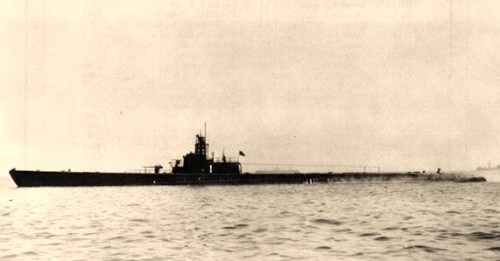
USS Sculpin (SS-191)Off San Francisco, California, on 1 May 1943, following an overhaul. Official U.S. Navy Photograph, from the collections of the Naval Historical Center.
On November 19, 1943, the submarine USS Sculpin, under attack by the Japanese, slid below the waves for the last time in what would become one of the most remarkable stories in U.S. Naval history. Not only did several crew members survive the sinking – an extremely rare event in World War II submarine warfare – but several were aboard a Japanese aircraft carrier en route to a POW camp when it was in turn torpedoed and sunk by the Sculpin’s sister ship, the USS Sailfish.
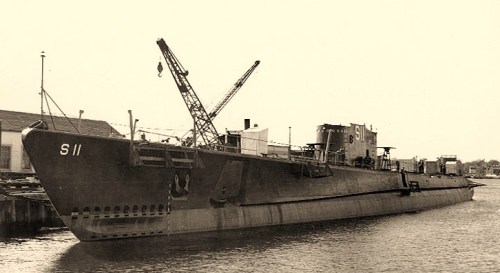
USS Squalus (SS-192)Fitting out, at the Portsmouth Navy Yard, Kittery, Maine, 5 October 1938. Photograph from the Bureau of Ships Collection in the U.S. National Archives.
At the end of World War II, several unlikely survivors would tell a tale of endurance against these amazing reversals of fortune. For one officer in particular, who knew that being captured could have meant losing the war for the allies, his struggle was not in surviving, but in sealing his own fate in a heartbreaking act of heroism which culminated in the nation’s highest tribute, the Medal of Honor.
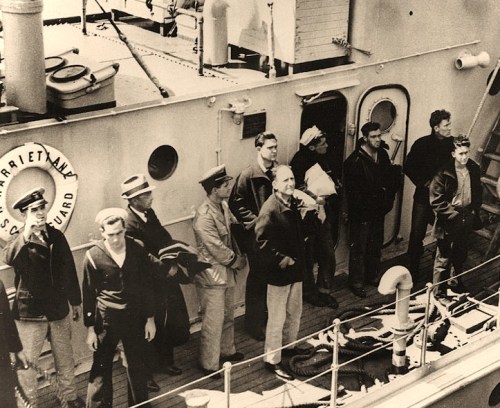
USS Squalus (SS-192) Rescue Operations, May 1939 Squalus’ Commanding Officer, Lieutenant Oliver F. Naquin (center, hatless, wearing khaki pants), with other survivors on board the Coast Guard Cutter Harriet Lane, bound for the Portsmouth Navy Yard, Kittery, Maine, following their rescue, 25 May 1939.
Sculpin Lt. Commander John Phillip Cromwell was one of the few who knew that American Naval Intelligence had succeeded in cracking Japan’s top-secret codes. Cromwell also knew that if the Japanese confirmed this by torturing him, it would force Naval Intelligence to change their encryption, which would potentially change the course of the war. This is Cromwell’s story as well.
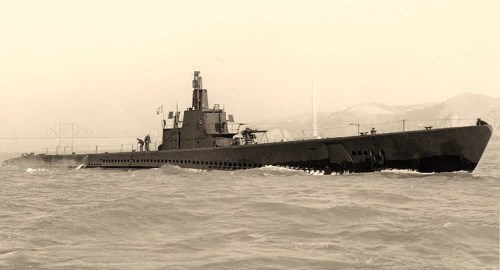
USS Sailfish (SS-192)Off the Mare Island Navy Yard, California, 13 April 1943. Photograph from the Bureau of Ships Collection in the U.S. National Archives.
The incredible interconnection of the Sculpin and the Sailfish has been thoroughly researched by Jonathan McCullough. Through access to the few living survivors, scores of oral histories, never-before translated Japanese war documents, and interviews with Navy veterans, McCullough delivers a gripping and, intimate account for the reader.
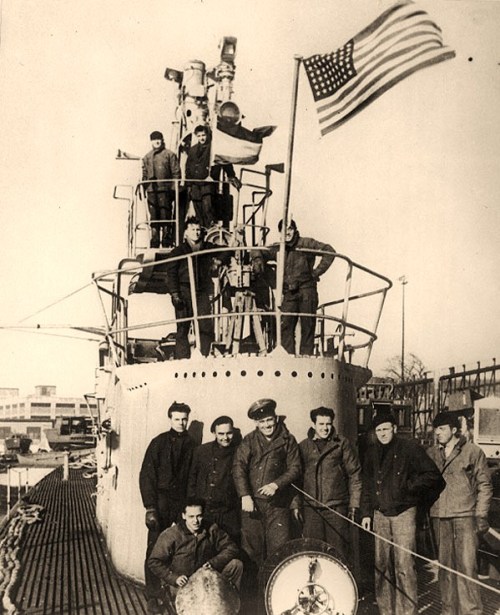
USS Sailfish (SS-192) Crew members pose by the after end of the conning tower, while Sailfish was at Naval Submarine Base, New London, Groton, Connecticut, in 1945. Her Presidential Unit Citation flag is flying behind the periscope sheers, in upper center. Original photo is dated September 1945. Official U.S. Navy Photograph, now in the collections of the National Archives.

